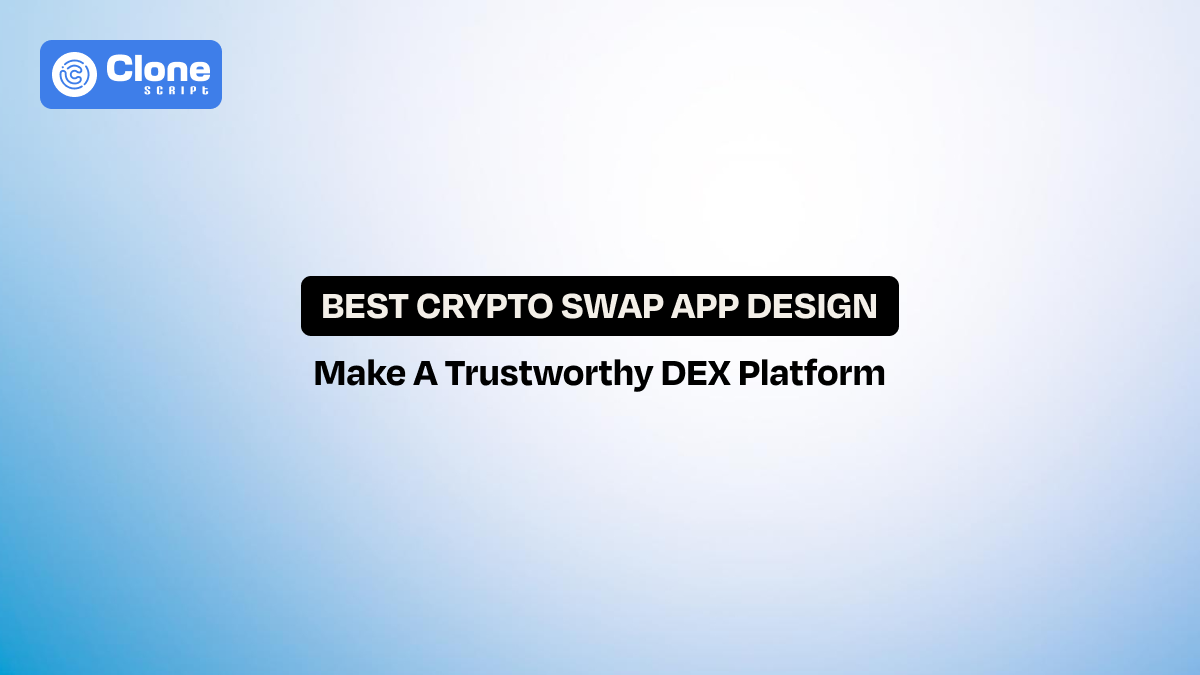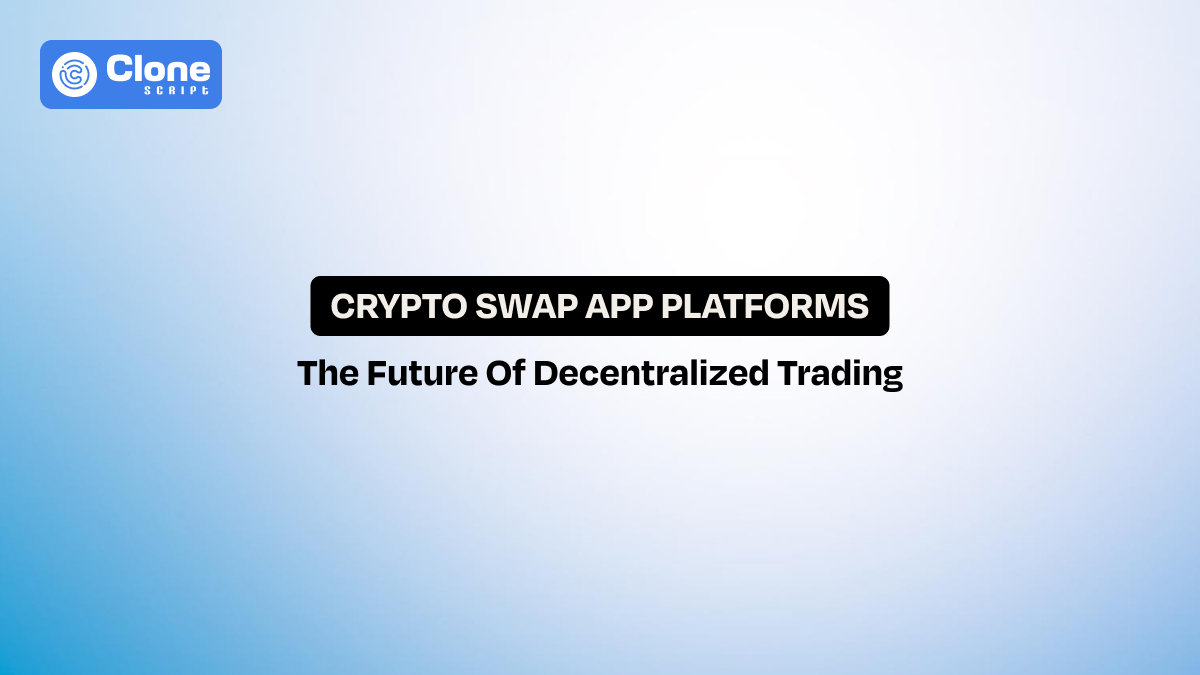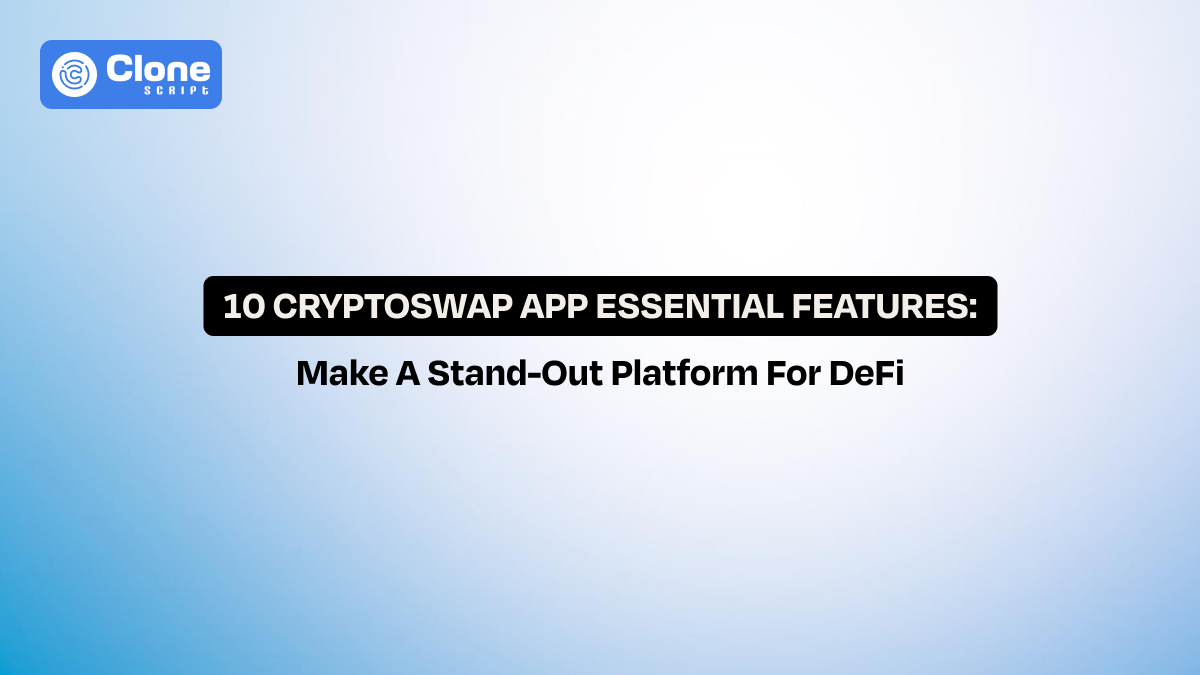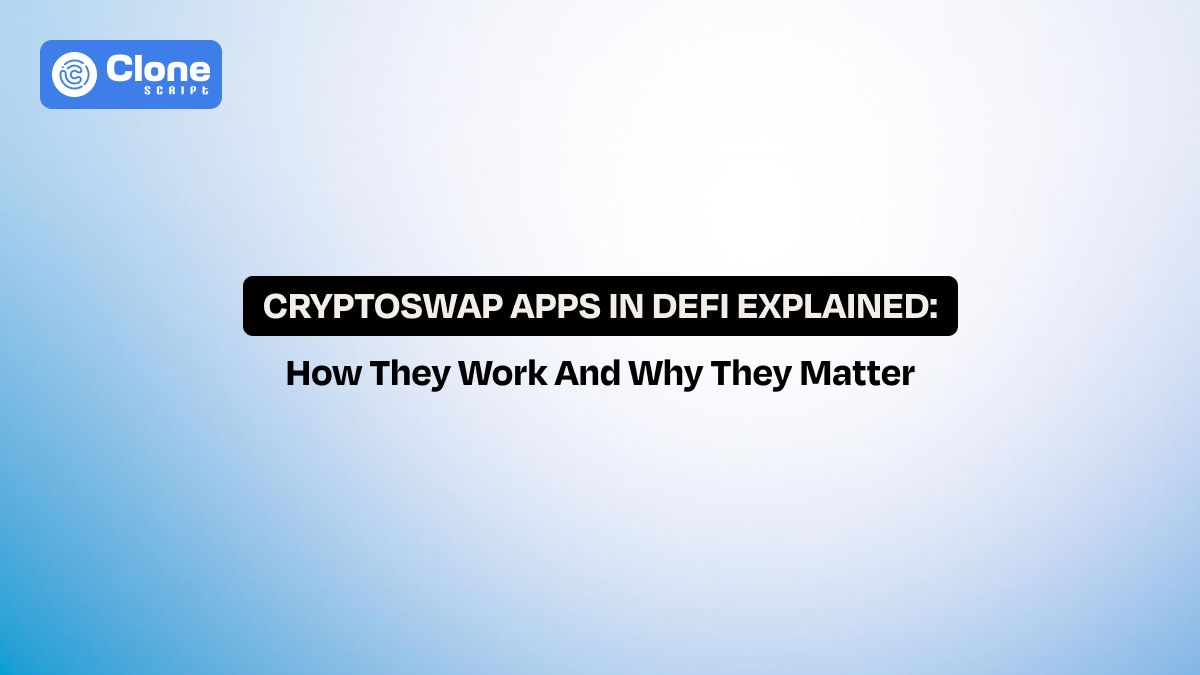How to Design a CryptoSwap App That Engages Traders
In 2025, decentralized trading for early adopters becomes mainstream. Millions of traders are swapping tokens daily, not through exchanges, but directly through crypto swap apps embedded in wallets and DeFi dashboards.
According to Dune Analytics, wallet-based swaps have grown over 10× since 2021, reaching 20 million weekly swaps in 2025 (The Coinomist, 2025). That’s an extraordinary shift in user behavior, from centralized trust to UX-driven trust.
And that’s where web designers come in.
Building a DeFi swap platform that users actually enjoy means solving complex design problems — balancing security, transparency, and speed with simplicity. Because the truth is simple: traders don’t care how beautiful your gradients are; they care how fast, clear, and safe your swap feels.
Let’s understand how to design a crypto swap app UX that engages, retains, and converts traders — powered by real-world data and proven UI/UX principles.
Why Design Matters in CryptoSwap Apps?
When you think of crypto, the first words that come to mind might be decentralization, tokens, or gas fees — not design. But design defines trust in DeFi.
-
A study from Applause found that 88% of users abandon apps due to bugs or poor UX (Applause, 2024).
-
Coolest Gadgets (2024) reported that 90% of users stop using an app after a bad experience.
Now this fact applies to crypto: if one swap fails or looks suspicious, the user may never return under any condition.
For convincing traders, good UX = credibility methodology works. A well-structured swap interface shows that a platform understands risk, speed, and transparency, the three pillars of crypto trader psychology. Designers who get this right don’t just create interfaces. They are creating confidence.
That’s why design is no longer negotiable for DeFi builders. It’s the competitive edge.
First, Understand Trader Behavior in CryptoSwap Apps.
To design for crypto traders who want to swap their assets, you need to understand their mindset.
Unlike social or retail users, they operate in real time, managing assets worth hundreds or thousands of dollars with every tap. They’re data-driven, impatient, and expect instant visual validation that their action was successful.
Here’s what the numbers show about app user behavior (which directly applies to DeFi swaps):
-
53% of users abandon a site or app if it takes longer than 3 seconds to load (Toptal UX Insights, 2024).
-
70% of users uninstall apps due to poor user experience (MoldStud, 2024). Thus, not having an attention-getting appearance, you’re pushing users to your competitors.
-
Good onboarding design can boost retention by up to 50% (TechTose, 2024). It reduced your retargeting marketing campaigns.
Traders expect instant clarity and control — they want to know:
-
Which tokens are being swapped
-
The exact value in USD
-
What network or chain does the transaction run on
-
Whether the fees are transparent
-
And how long does it take
A crypto swap app’s design should eliminate all uncertainty at one shot. Every extra click or unexplained delay feels like a risk and reduces engagement.
Then, Prioritize Clean Swap Interface: Keep It Simple and Focused
Think that the best token swap UX is one that disappears in a minute?
No, it’s not just like that.
Users don’t think about the interface anymore, but they just flow through it and complete the action, like Swap and checking the Slippage rate.
That’s where a clear and minimal layout is critical. Here’s what that means for design:
1. Focus on the Core Action
Your swap screen should have two primary fields that are easy to understand:
-
From: Token A (with balance + USD equivalent). This shows your held assets to be converted.
-
To: Token B (with converted amount). This can represent how much the amount is credited to the user’s wallet after the swap.
In this matter, avoid extra noise. Don’t add unnecessary charts, ads, or banners that distract users from what they came to do.
2. Use Microfeedback
We know cryptocurrency is volatile, and we experience the price drops and surges in a minute of seconds. So, in accordance with swap platform design, users are always in a hurry and want to experience safety when commencing transactions.
So, to keep their trust at the top, adding progress text like “Approving Token…” or “Swap Confirmed” gives psychological comfort. It tells users the system is working, not frozen.
3. Design for Error Prevention
When users are swapping crypto, error prevention is important. So, they can minimize the risk associated with value loss or failed transactions.
For that, show warnings for low liquidity, slippage tolerance, or insufficient gas fees — before they confirm the swap.
Data backs this simplicity.
-
94% of first impressions are design-related (WPDean, 2024). A cluttered swap screen can destroy trust before users even connect their wallet.
Thus, minimalism in design isn’t just a style; it is considered a user protection.
Don’t Forget to Made Wallet Integration Effortless.
Every crypto app exists by how smooth its wallet connect experience feels.
After all, it’s the main element to proceed with the swap, and without it impossible to convert the own assets into a favorable one.
Keep in mind, poor wallet integration is one of the biggest UX killers in DeFi. Users expect it to “just work” — instantly.
So, app designers should aim for:
-
One-tap connections for WalletConnect, MetaMask, TrustWallet, etc. Don’t be too long here, or make it too fancy for attention-taking.
-
Clear status feedback helps users to feel safe and prevents losing engagement. (“Connecting…”, “Connected to Ethereum Mainnet”)
-
Chain selection with auto-detect
-
Error states with clear next steps (“Network not supported — switch to Polygon?”). This will reduce the frustration and keep users on the line.
While we don’t yet have crypto-specific abandonment data because it’s nearly impossible. But you have to look at this statistic:
-
UX studies show users immediately quit when workflows break. In one report, 88% abandon apps due to glitches (Applause, 2024).
That means if Wallet Connect fails or confuses users, your retention tanks.
The rule: don’t make users think, don’t make them wait, and never make them guess.
Real-Time Feedback and Transaction Transparency Are Important.
One thing to keep in mind: swapping the crypto from one currency to another depends on how quickly the details users are getting. If they don’t know what’s happening now, they will simply uninstall the crypto swap app you developed.
Why?
Because the blockchain is transparent, and your UI should be too. As simple as that!
Thus, when traders hit “Swap,” they want feedback every step of the way. Without it, uncertainty builds, and uncertainty feels unsafe in a volatile market.
Best UX Practices for Transparency
-
Show “pending”, “processing”, and “confirmed” states. Maintain transparency.
-
Display gas fees, network confirmation times, and transaction hash with a direct link to an explorer. Don’t hide any single information.
-
Include estimated completion time and clear result animations. It helps users know what they will get in return for the token swap.
Here’s the fact you have to believe:
Designers can learn from generic UX data: timely feedback improves retention by 40% (MoldStud, 2024).
Crypto users are used to waiting for confirmations; it means that what they can’t stand is silence. Real-time DeFi swap UI feedback makes waiting feel like progress.
Designing for Speed and Mobile Performance Always.
Crypto swaps happen anywhere. From in line for coffee, between trades, or on a phone during market dips. That’s why mobile performance defines engagement.
-
As mentioned previously, half of the users prevent themselves from using an online platform if it takes a minimum of 3 seconds to load properly.
-
Around 4/5 users don’t ever think about the app to prefer again after experiencing poor performance. (Coolest Gadgets, 2024).
That means laggy animation or API delays aren’t minor issues. But, they’re business losses. It means you’re decorating the ready-made platter for your competitors.
Design Rules for Speed
-
Lightweight layouts — Keep the image limits maintained in sizes and storage, compress assets like minifying CSS and JS, and use skeleton loaders.
-
Local caching — Remember token lists and preferences, launch as long as possible without any interruption.
-
Minimal transitions — To make the app more elite and focus on responsiveness, don’t depend on heavy motion. Every unique design is useful, but keep the simplicity maintained.
-
Mobile-first breakpoints — Ensure the swap panel and wallet modal adapt gracefully on every device size. It makes the app run ideally without any barriers or prerequisites.
In crypto, milliseconds matter. It’s not just about UX, but to market prices. Your design should perform like a trader: fast, precise, decisive.
Build Credibility with Security-Focused Design to Make a UVP.
There are thousands of DeFi apps that exist online with swap functionality. So, what is your unique value proposition to differentiate your app?
It’s simple. Just focus on the security-enhanced design presentation. In other words, security isn’t just code — it’s also visual communication.
Traders subconsciously judge safety by how a platform looks and works.
-
75% of users base credibility judgments on design, not content (WPDean, 2024).
Design Elements for Trust
-
Use consistent color schemes that align with your brand. Stick to 3-4 primary and secondary color combinations to use in header, footer, and product pages. Use white space concisely.
-
Display verified audit badges or partner logos subtly (not as popups). The awards and the trustworthy platform’s association with the app help users to justify using your app to use for swapping.
-
Avoid aggressive modal windows or misleading prompts. It’s tempting to get instant attention from users through the assumed and unexpected details. But in crypto, it’s not possible, and if then it brings legal obligation.
-
Show transaction preview summaries before confirmation. This is very important for a new user who is just familiar with the token swap and knows what amount they will get after the transaction is complete.
Little cues like padlock icons, clear language (“This transaction will be executed on Ethereum”), and readable typography give emotional assurance.
When people are about to sign a blockchain transaction, visual calmness equals trust.
Test and Refine Through User Feedback to Make the Product Useful.
Once you complete the app wireframing and prototyping, you’re on top. You think your token swap app design is the best.
But here’s a reality check: without testing and user feedback, the product will not be useful to users anymore.
It means designing for crypto is like designing for moving targets. As user needs evolve as quickly as blockchain updates, the app design should reflect it.
-
The apps that continuously collect and act on feedback enjoy 23–25% higher retention (MoldStud, 2024).
Feedback Strategies for Designers
-
In-app micro-surveys: After swaps, ask “Was this transaction smooth?” This kind of real-time feedback makes the experience connected to the platform.
-
A/B testing: Try alternative wallet connect layouts in certain portions to validate which can works or which one does not. It is important to know for measuring product success.
-
Heatmaps/recordings: See where users hesitate during swaps and abort in the final steps. From here, you can identify the relevant issues and improve the swapping experience.
-
Community channels: Encourage feedback from power users and traders. This will help you to make a user-centric platform where their recommendations matter.
Testing is not a one-time event. Every update — new chain, token type, or fee system — must be re-tested. Crypto users are unforgiving; a single bad update can lead to mass abandonment.
So, iterate, test, refine, repeat — that’s the UX survival rule in DeFi.
Bonus Tip: Use Ready-Made CryptoSwap App Templates
If you’re building a crypto token swapping platform from scratch, designing every screen manually takes time — and mistakes are costly. Instead, start with a tested design framework.
Presenting the Cross-Chain Swap and Mining App UI Kit is a ready-made Figma design template that covers the layouts for:

-
Token swap interfaces
-
Wallet connect screens
-
Transaction status layouts
-
Mobile and dark-mode variants
It’s built specifically for DeFi swap UI design, so it handles spacing, visual hierarchy, and component consistency. This lets you focus on functionality and branding instead of reinventing UX basics.
For design teams, that’s a massive shortcut toward a launch-ready, user-tested experience.
Conclusion
The future of crypto swap apps belongs to designers who understand not just blockchain, but human behavior.
From verified UX research, we know:
-
Users abandon slow or confusing apps instantly.
-
Design clarity equals trust and retention.
-
Real-time feedback, smooth wallet integration, and transparency are the top drivers of engagement.
A crypto swap app that succeeds in 2025 won’t just have great tech — it’ll have a UX that feels effortless.
So, design every pixel around what matters most to traders:
-
Speed they can feel
-
Transparency, they can verify.
-
Security, they can see
Because when traders trust your interface, they’ll trust your platform — and that’s the real currency of DeFi.
FAQs
-
How do you create a user-friendly crypto swap app?
Focus on minimal steps for swaps, wallet auto-detection, and clean typography. Maintain a visual hierarchy that guides users through the process without confusion or clutter.
-
What features do traders value most in crypto swap apps?
Traders prioritize instant swap execution, low gas fees, transparent confirmations, cross-chain compatibility, and secure wallet integration with a clear, responsive interface.
-
What is token swap UX, and why does it matter?
Token swap UX defines how users interact with decentralized exchanges. A smooth experience ensures quicker swaps, fewer transaction failures, and higher trader satisfaction.
-
How can UX design increase engagement in DeFi platforms?
By simplifying complex DeFi processes, offering personalized dashboards, visual swap history, and feedback notifications, UX design encourages repeat usage and trust among crypto traders.
-
How important is visual trust in DeFi swap UI?
Visual trust elements like verified badges, transaction logs, and SSL icons help users feel secure, significantly improving swap completion rates and long-term retention.
-
What tools help designers build crypto swap UIs faster?
Figma, Sketch, and UI kits like offer ready-made templates, icons, and flow screens optimized for DeFi apps. You can use them in frontend app development and maintain consistency throughout the process.
-
How does wallet integration improve crypto app usability?
Wallet connect integration lets users trade directly from trusted wallets like MetaMask or WalletConnect, improving convenience, security, and retention by reducing extra sign-in or transfer steps.
 BTC - Bitcoin
BTC - Bitcoin
 USDTERC20 - USDT ERC20
USDTERC20 - USDT ERC20
 ETH - Ethereum
ETH - Ethereum
 BNB - Binance
BNB - Binance
 BCH - Bitcoin Cash
BCH - Bitcoin Cash
 DOGE - Dogecoin
DOGE - Dogecoin
 TRX - TRON
TRX - TRON
 USDTTRC20 - USD TRC20
USDTTRC20 - USD TRC20
 LTC - LiteCoin
LTC - LiteCoin







